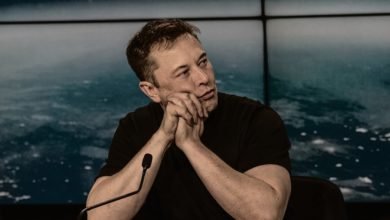September CPI Points to a Potential Wage-Price Spiral
The Bureau of Labor Statistics just released the Consumer Price Index (CPI) for the month of September. Even though it appears that the economy slowed down in September, the CPI was higher in September than it was in August. Prices in September of this year were 5.4% higher than one year ago.
The Federal Reserve (Fed) and the Biden administration have been saying since last April that the inflation we are experiencing is transitory, which means temporary. They claimed that as soon as the supply chain disruptions are resolved, inflation would subside. Lately, they have said that the transitory trend is going to last into next year. The reality is, the inflation is not temporary.
Rather, we are likely to see the inflation increase in the comings months. Right now, the economy is producing goods and services at a higher rate than prior to the pandemic. That means, while there may be supply disruptions for some products in some markets, in total supply chain disruptions are not the primary cause of inflation.
Why, then, are we experiencing such high inflation?
There are at least four other reasons why we are experiencing inflation, and none of the four will be fixed anytime soon. Recall that the underlying reason why prices rise is that total demand is greater than businesses’ ability to supply that demand.
On the supply side, the lack of willing workers and the resulting rising wages have restricted companies’ ability to increase output. In addition, the increased labor cost means business must raise prices in order to maintain a high enough profit margin to stay in business.
A Wage-Price Spiral
With an astounding 4.3 million workers quitting their job last month and with thousands of additional workers dropping out of the labor market, inflation is likely to last for some time. The longer it lasts, the more likely the economy will experience a longer-term wage-price spiral.
This spiral occurs when labor cost rises, say, 5%, which forces business to raise prices. Then if there is a 5% inflation, workers will demand a 7% raise next year, because they need 5% just to keep up with inflation and they want to really get 2% more. Then labor cost go up 7% which raises prices more. This results in a wage-price spiral.
Also, the Biden administration wants to transition away from fossil fuels. As a result, it canceled the Keystone Pipeline, ended drilling on federal lands and stopping exploration off of the Alaska coast. These actions restrict supply which, in a growing economy, raises energy prices. That means consumers and business pay more for energy, which drives up the overall inflation rate.
Fiscal Policy is also contributing to inflation. The federal government has spent $6 trillion more than was raised in tax revenue for 2020 and 2021. This excess demand on a $22 trillion economy will contribute yet further to rising prices. Not only won’t the federal government reduce spending to fix this, but they are proposing to spend $5 trillion more.
And finally, baffling to most objective economists is the Monetary Policy set by the Fed. Historically, at the very hint of inflation, the Fed will act. For instance, at the end of 2016, there was a slight hint of inflation. The Fed raised interest rates eight times from the end of 2016 to the end of 2018. They also reduced their purchases of government bonds.
Even though as early as March of this year when inflation looked problematic, the Fed continues to this day purchasing $120 billion of government bonds monthly. They do this by simply electronically printing more money which vastly increases the money supply. Most objective economists will conclude that this is very inflationary.
The Fed tries to defend themselves by citing Modern Monetary Theory (MMT), which says, under circumstances similar to what we are experiencing today, increases in the money supply will not be inflationary.
MMT is Simply Wrong, the Fed Misguided
Because today’s inflation is mostly caused by those four reasons, inflation is here to stay. It is imperative that the Fed act immediately. The board of governors should gradually reduce their bond purchases and gradually raise interest rates. The Biden administration should refrain from spending any more trillions, and Congress should not pass any additional spending bills until the inflation problem is resolved.
Failure to take these actions will result in much higher inflation and eventually slower economic growth. The worst case (which is possible considering the size of the public debt and the resulting capital shortage combined with the current labor shortage) will be stagflation similar to what the U.S. experienced in the 1970s.
We really want to avoid that.




